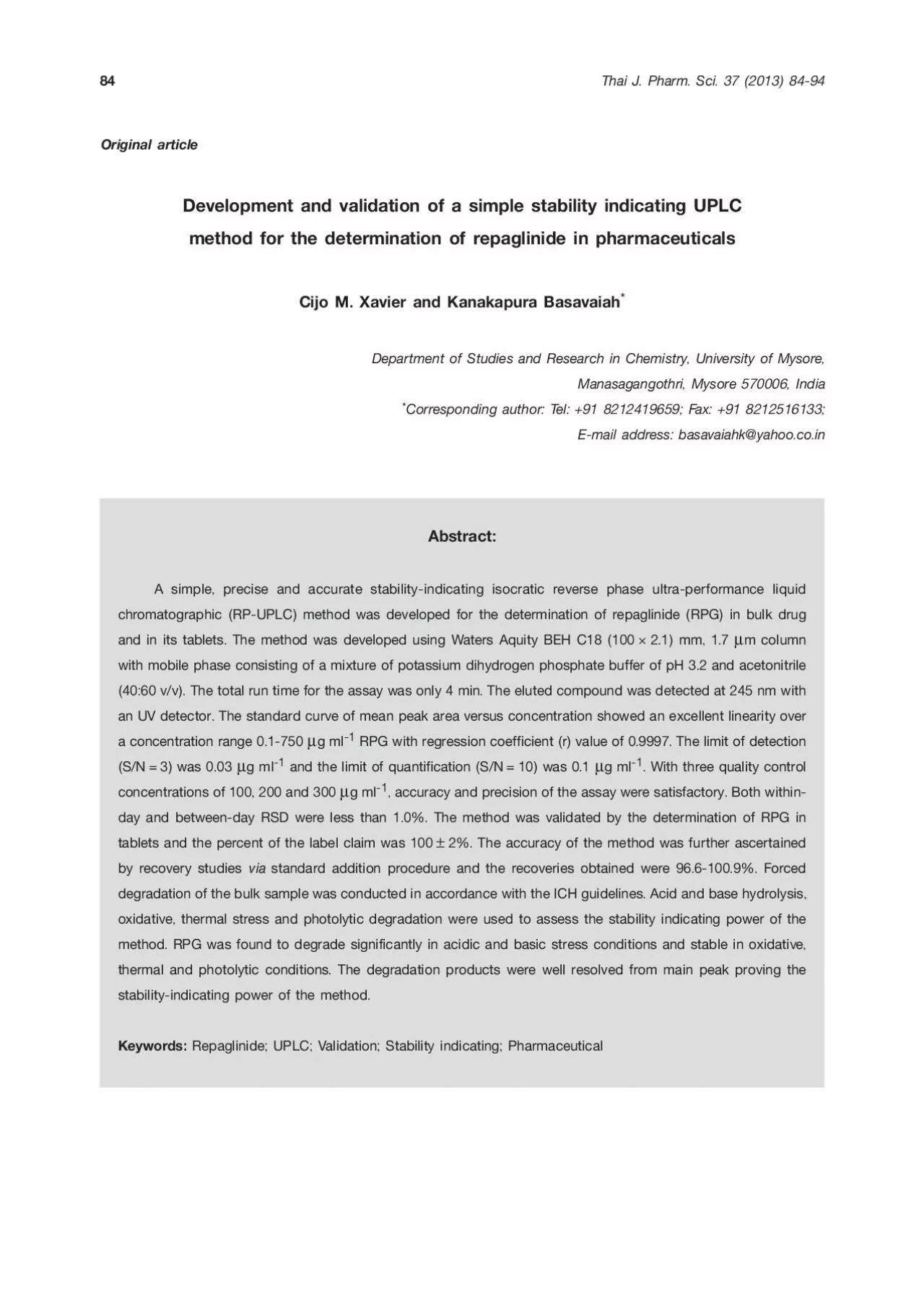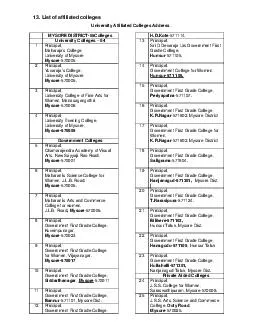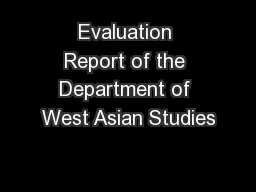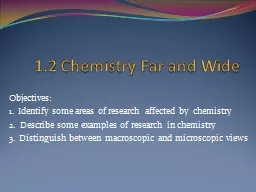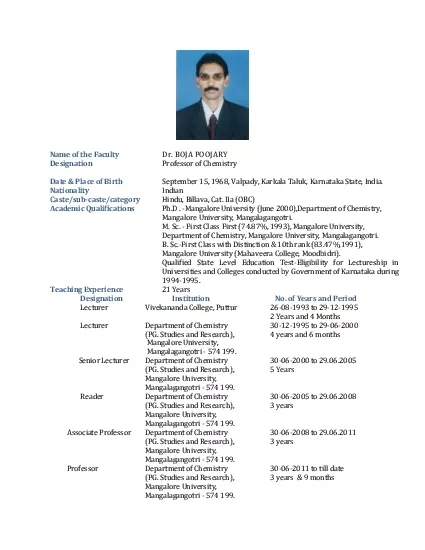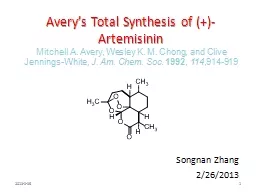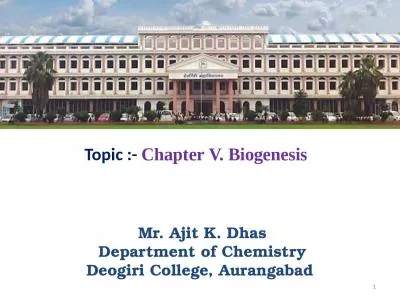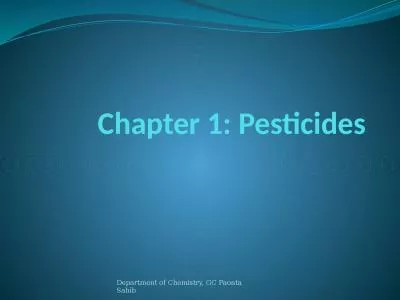PDF-Department of Studies and Research in Chemistry University of Mysore
Author : berey | Published Date : 2021-06-28
A simple precise and accurate stabilityindicating isocratic reverse phase ultraperformance liquidchromatographic RPUPLC method was developed for the determination
Presentation Embed Code
Download Presentation
Download Presentation The PPT/PDF document "Department of Studies and Research in Ch..." is the property of its rightful owner. Permission is granted to download and print the materials on this website for personal, non-commercial use only, and to display it on your personal computer provided you do not modify the materials and that you retain all copyright notices contained in the materials. By downloading content from our website, you accept the terms of this agreement.
Department of Studies and Research in Chemistry University of Mysore: Transcript
Download Rules Of Document
"Department of Studies and Research in Chemistry University of Mysore"The content belongs to its owner. You may download and print it for personal use, without modification, and keep all copyright notices. By downloading, you agree to these terms.
Related Documents

